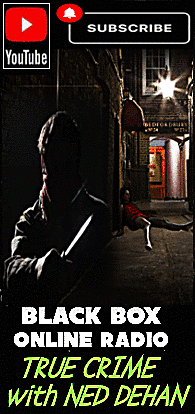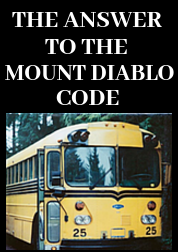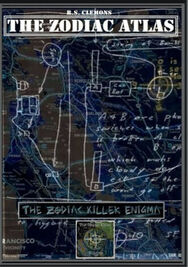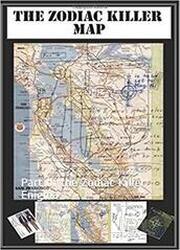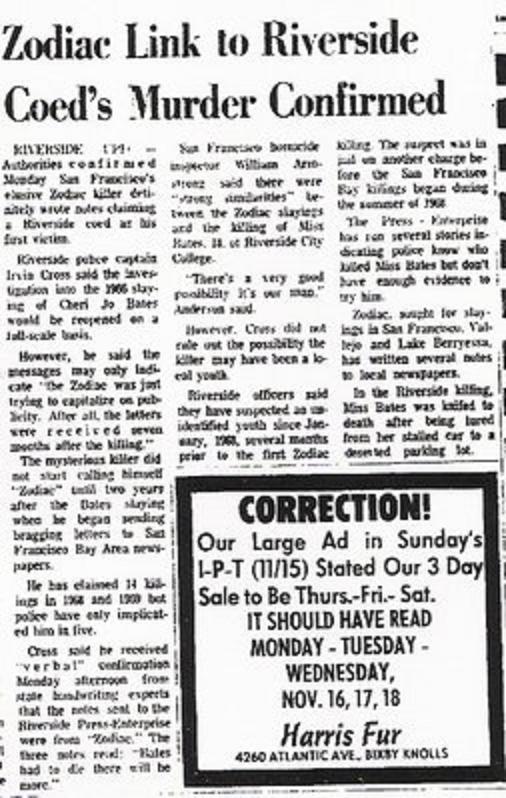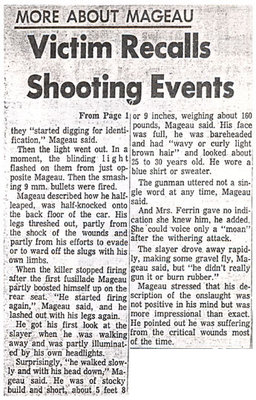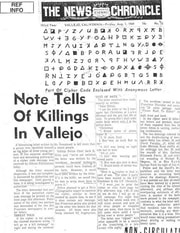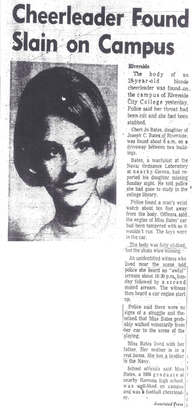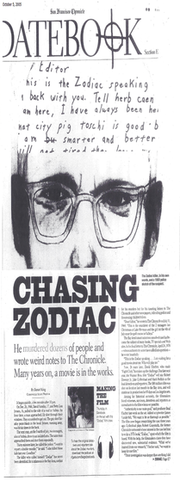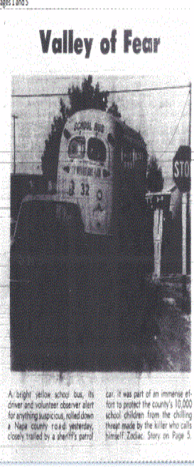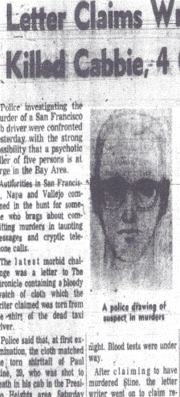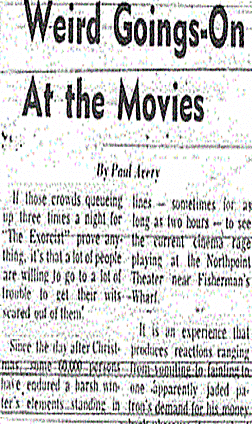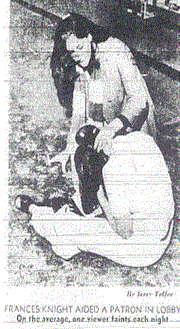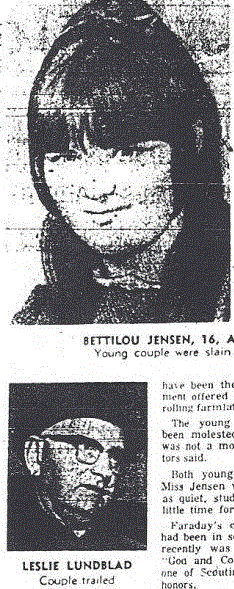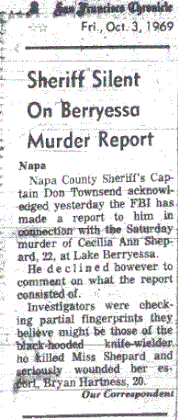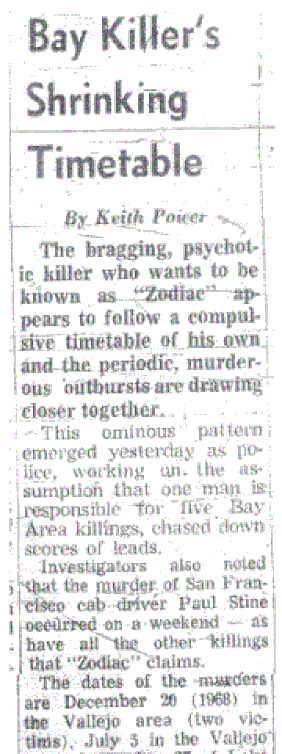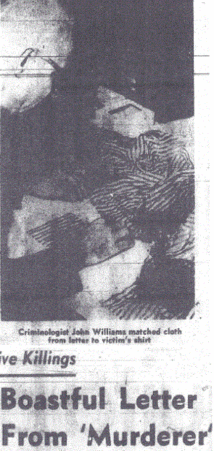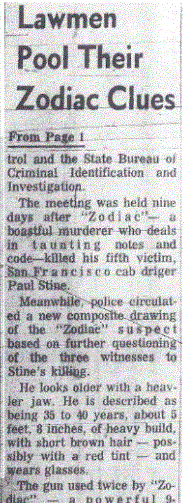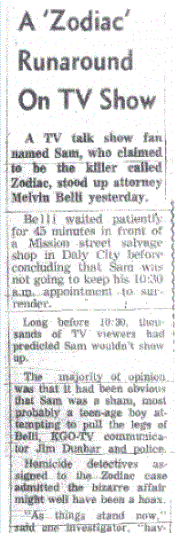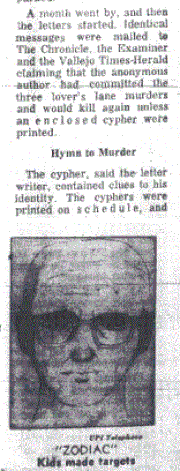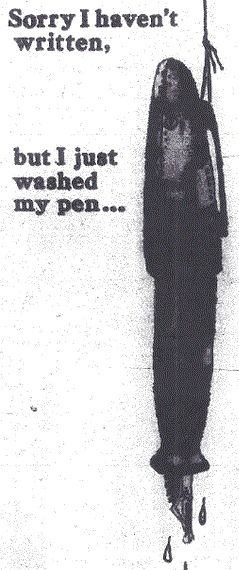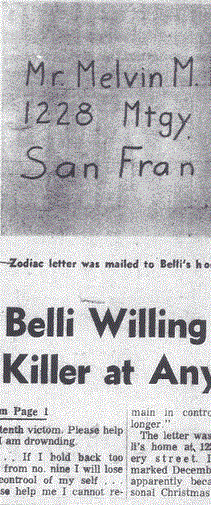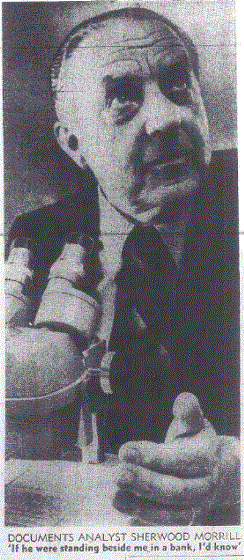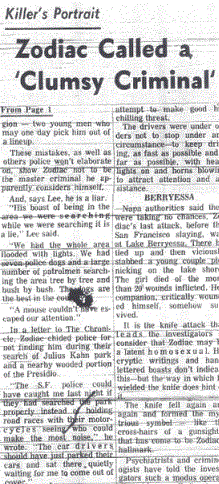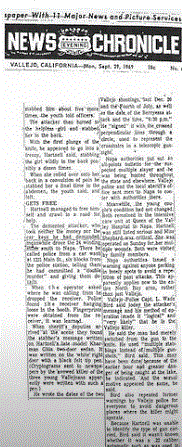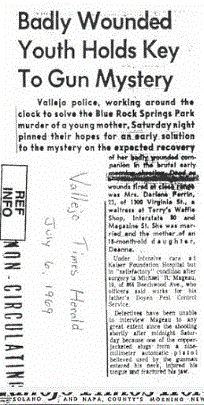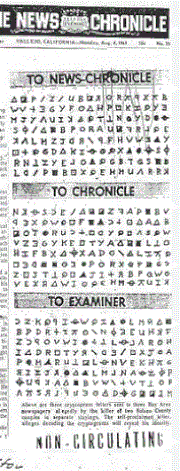 Click to enlarge..
Click to enlarge.. Here we shall focus on the condition the Volkswagen Beetle was found in and 'abandoned' that Sunday night, as well as the crime scene and what Cheri Jo Bates had in her possession. Assuming the independent eyewitnesses, who heard screams between 10:15 pm and 10:45 pm were correct, then Cheri Jo Bates was likely away from her vehicle for at least four hours that night. When she returned to Terracina Drive, her vehicle was apparently disabled, leading to speculation she was led away unsuspectingly to her death by a single assailant on the promise of a lift or phone call for help. But something doesn't sit right with this scenario.
'Detectives learned from the slain girl's friends that Cheri Jo had been "terribly afraid of the darkness." This led investigators to believe that Cheri Jo had known her killer and unsuspectedly accompanied him to her death. "Cheri Jo was very proud of her little car" her boyfriend told detectives. "She worked hard to pay for the car. She never left it without locking the doors and rolling the windows up". So it is extremely unlikely she would have left the vehicle without locking the doors, rolling the windows up - never mind leaving her library books on the passenger seat, with the key in the ignition, especially at around 10:00-10:40 pm at night. Admittedly, the vehicle wouldn't start for her (or her supposed helper), but she couldn't be sure somebody else gaining access to her car at a later time wouldn't be able to start it - after all she likely didn't know the reason for it failing to fire up.
Another important piece of information surfaced in one newspaper column, but how reliable it is can only be speculated. It read "Both windows were rolled down and the right door was ajar. The distributor had been tampered with and there was evidence that the man had been in the car with her". Were the facts that both windows had been rolled down indicative of the time she returned to the Volkswagen Beetle and the ambient temperature inside the vehicle. 'In October 1966 the average high temperature in Riverside, CA was 80.7°F, and this was 0.2°F cooler than the average of 80.9°F. The hottest day in October 1966 was 31 October when the temperature reached 91.9°F. Overnight the average temperature in October is 51.8°F.' climatespy.com/climate/summary/united-states/california/march-arb/october/1966
She had rolled down both windows - not just the driver side - possibly indicating the stuffiness inside her vehicle and likely something you wouldn't do if you felt under any threat at this point in time. It obviously makes sense to roll your windows down before starting the vehicle and exiting Terracina Drive.
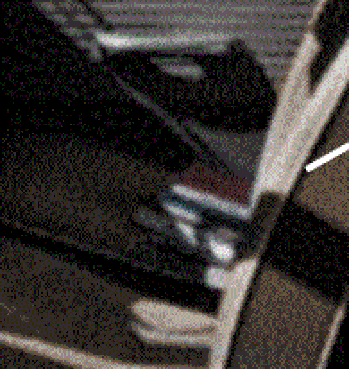
Her friends stated that Cheri Jo would never have "left her vehicle without locking the doors and rolling the windows up". That is unless a person she knew and trusted offered to stay with her vehicle, while a second person she knew and trusted offered to accompany her to a payphone, or a lift to make a call. One has to consider why a young woman would leave her prized Volkswagen Beetle with the windows rolled down, library books on the seat, door possibly ajar and keys in the ignition so late at night, yet still took her 'large red and tan woven straw bag', which was ultimately found half covered by her body. It has to be pointed out that many women will never be without their handbag, which often contains their personal items, such as a purse (and associated money), make-up, hair brush and such-like. It would therefore not be unusual to leave her vehicle with somebody she thought she could trust, but would instinctively take her handbag with her - in this case her woven straw bag. It is apparent that Cheri Jo was "terribly afraid of the darkness," and unlikely to have entered a dark, unlit alleyway at approximately 10:30 pm at night, but in the company of somebody she knew her fears would be allayed, coupled with her necessity to ring home or seek help.
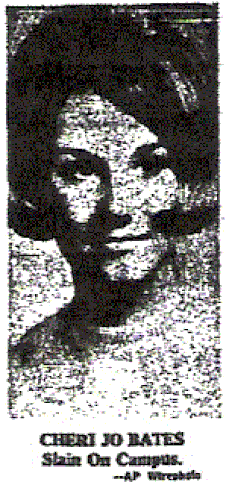
Cheri Jo Bates arrived back at her vehicle, placed her library books on the passenger seat, rolled both windows because it was stuffy, then placed the keys in the ignition to start the vehicle. Her Volkswagen turned over a few times and the two men (or possibly one man and a woman) approached, both known to Cheri Jo Bates, offering their help. At some point Cheri Jo, or one of the good Samaritans opened the passenger door (through the open window) kneeled and spoke to Cheri Jo, partially closing it after their conversation. The second pretended to look at the engine. When the vehicle failed to start, one person offered to accompany Cheri Jo Bates to their car to go for help, or offered to escort her to a payphone. The other stayed behind to keep an eye on her car, which is why she had no worries about leaving the windows down and keys in the ignition. She grabs her purse and woven straw bag, slings it over her shoulder and heads off toward the alleyway.
The detectives stated that after the murder "drops of dried blood leading from the body to Terracina Drive indicated that the murderer had walked back to the street following the slaying". This likely indicated that the murderer walked back to their accomplice, back to their car, or possibly both? During the reenactment two weeks later, students recalled a 1947-1952 Studebaker with "light-colored oxidized paint" parked just south of Terracina Drive at 7:00 pm on the night of the murder, that failed to show. Was this our killer/s vehicle parked just out of sight from Terracina Drive?
Two important questions remain. Where had Cheri Jo Bates gone after leaving the library just prior to 6:30 pm. If she had gone to a friend's house nearby, why didn't this person come forward to police? Were they afraid of being implicated in the crime?
Secondly, what was the exact time Cheri Jo Bates arrived back at her Volkswagen Beetle on Terracina Drive? Does the weather give us a clue? The sun set at approximately 5:00 pm that afternoon in Riverside, it was the first day of Daylight Savings, and the daytime temperature hit 88 degrees Fahrenheit. Was the fact that Cheri Jo Bates rolled both windows as opposed to just the driver side window, indicative of the temperature inside her vehicle when she returned, and that she had arrived back earlier rather than later on October 30th 1966, or had she rolled down both windows to speak to her approaching 'good Samaritans'? Cheri Jo Bates may have been forced from her vehicle by a single assailant at any point from 7:30 pm onward, and led towards the alleyway where she was ultimately stabbed. The state her vehicle was found the following day by police tells a story. A story of a young girl who was specifically targeted by her killer/s - the ripples of which are still being felt 51 years later.
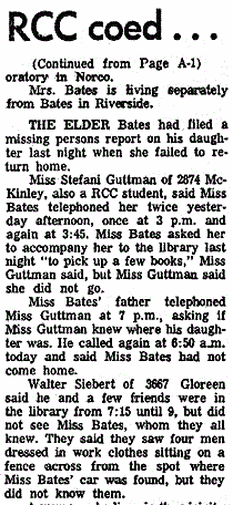

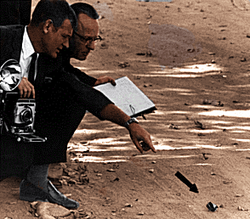

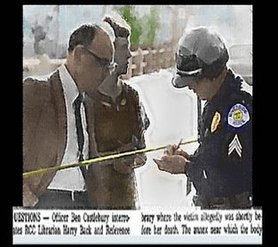
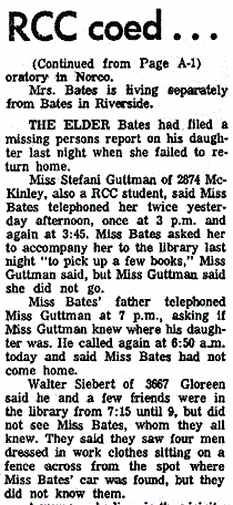

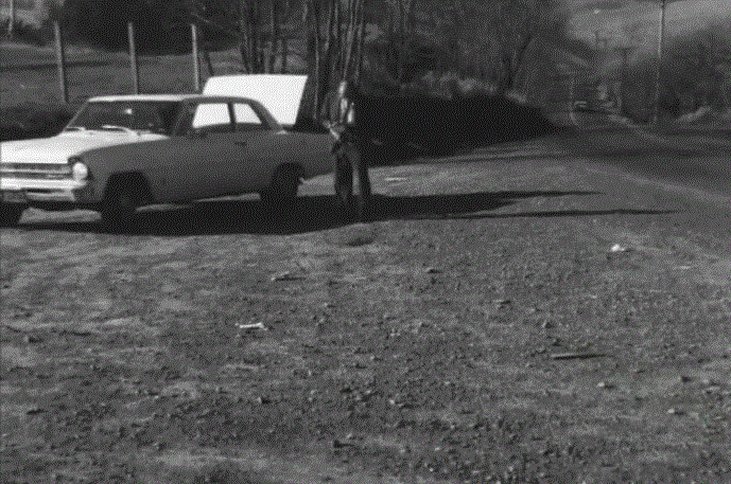
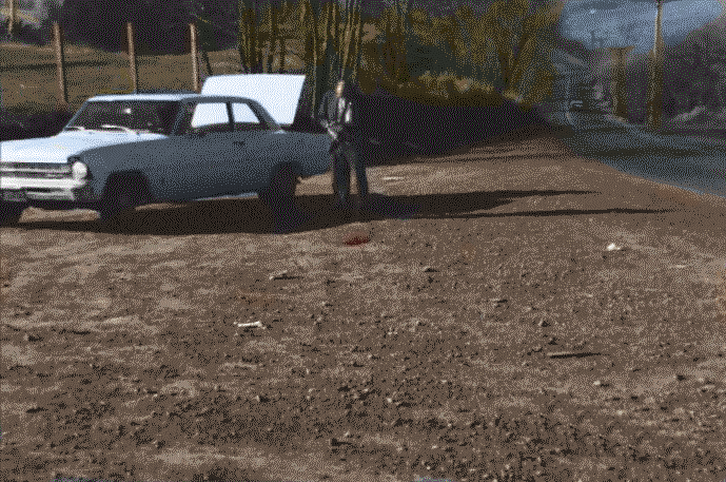
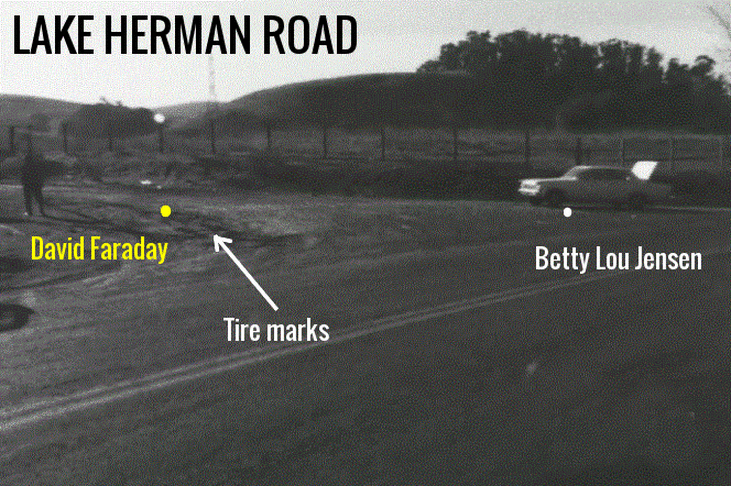
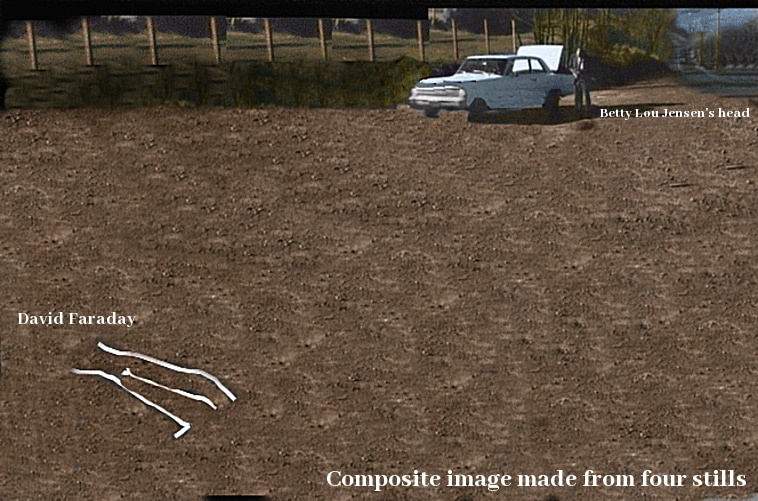
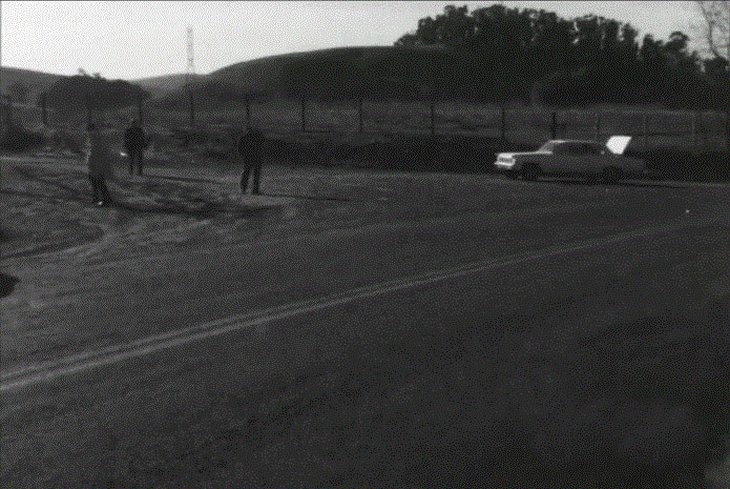
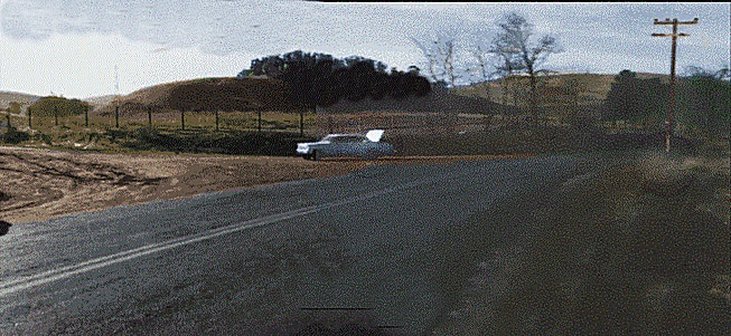
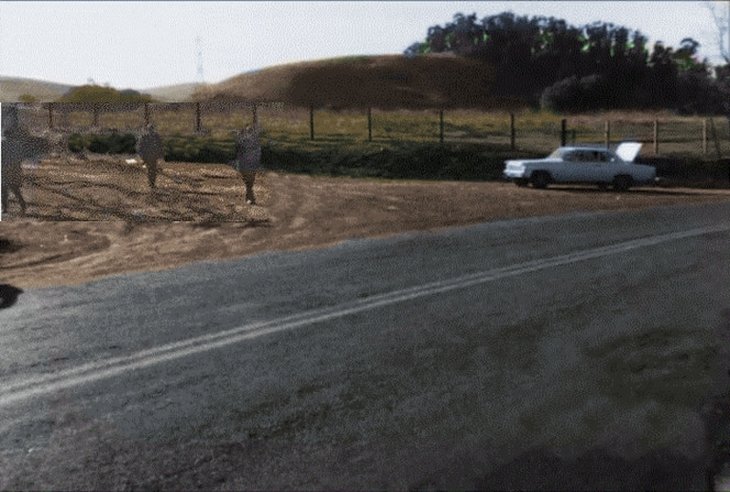
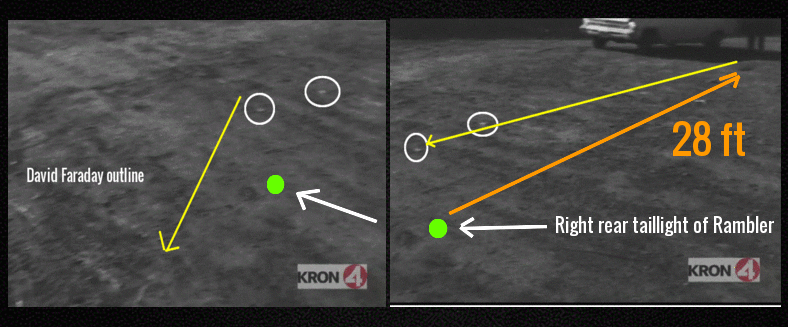
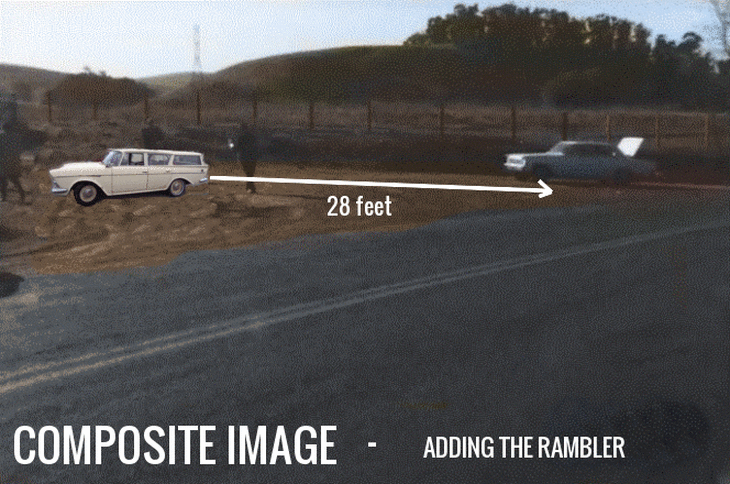

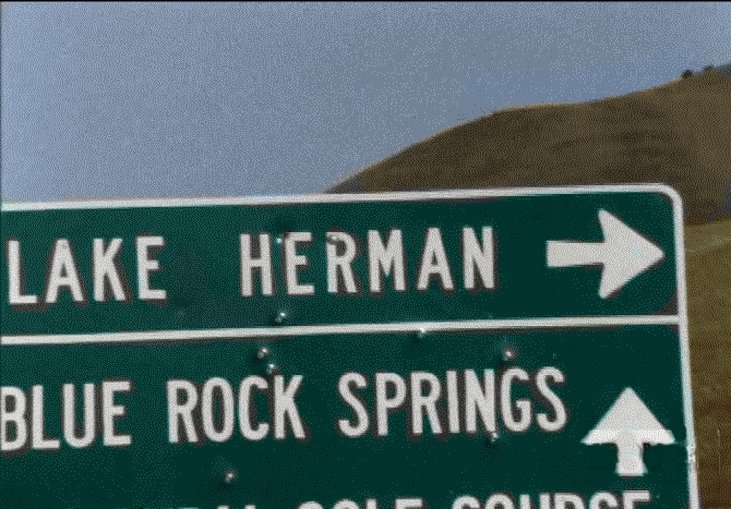
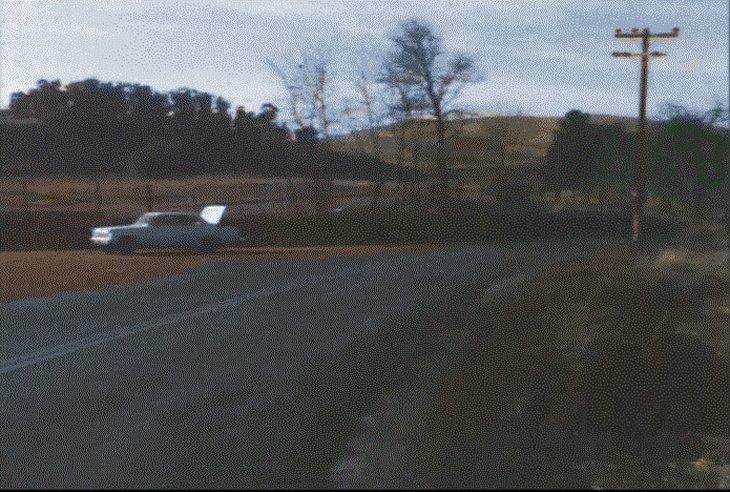
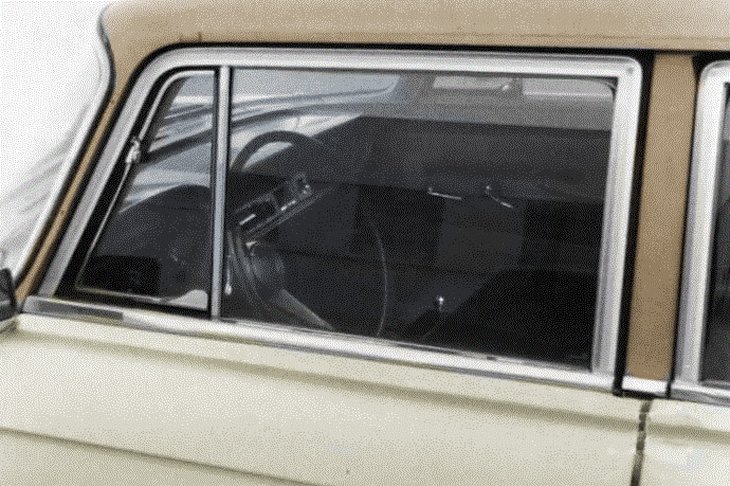
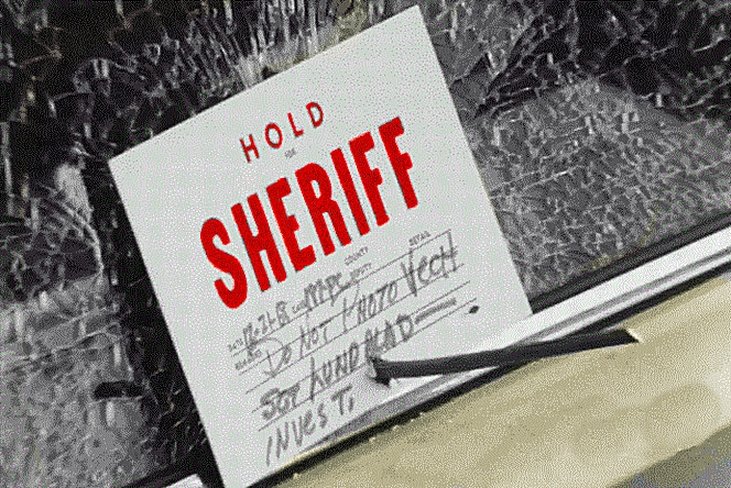
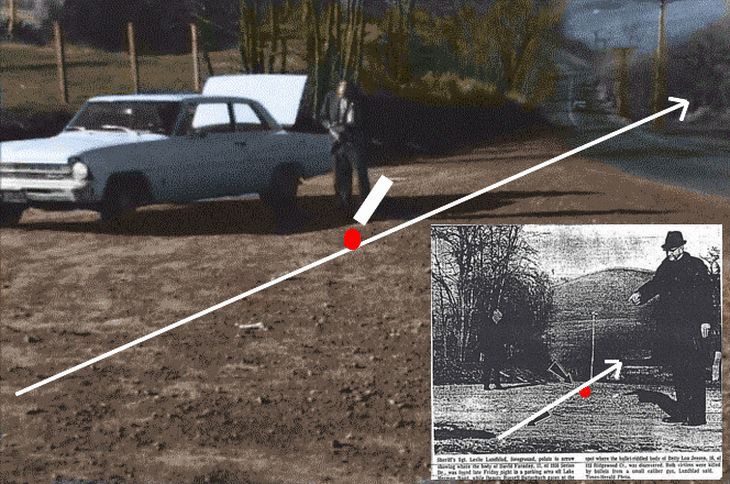
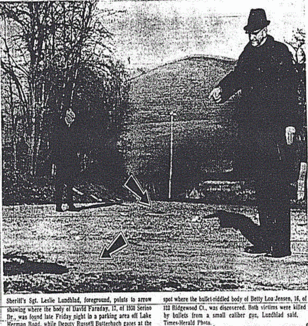
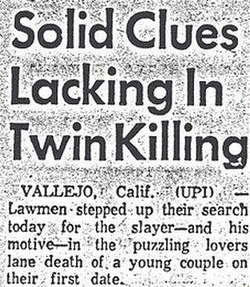
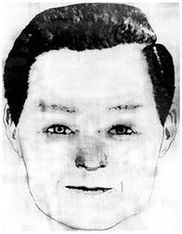
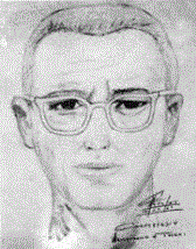
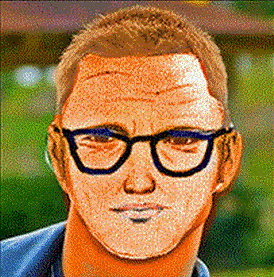
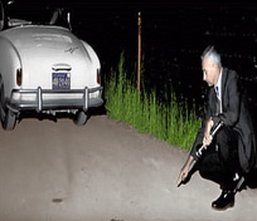
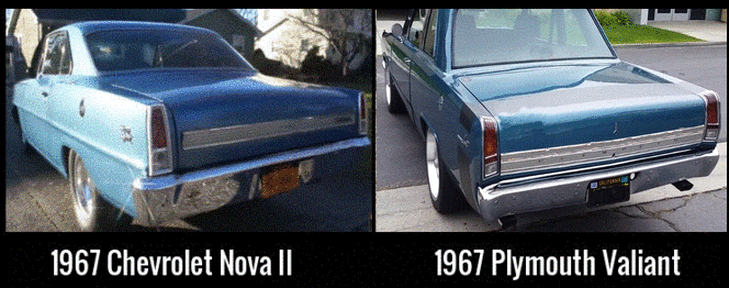



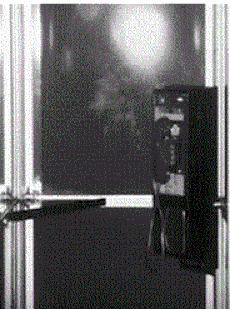

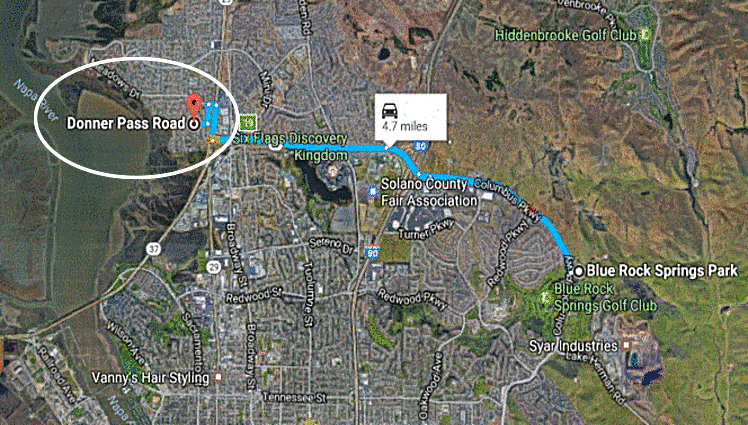
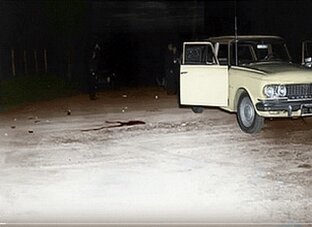

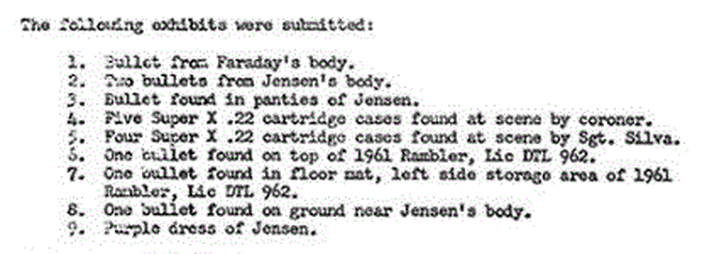



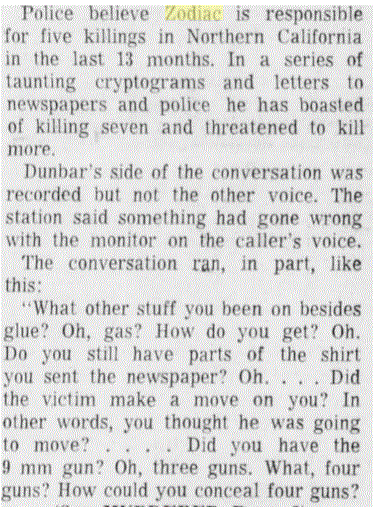
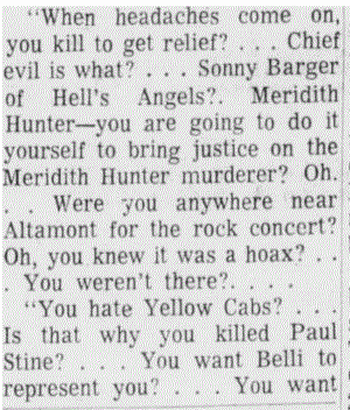
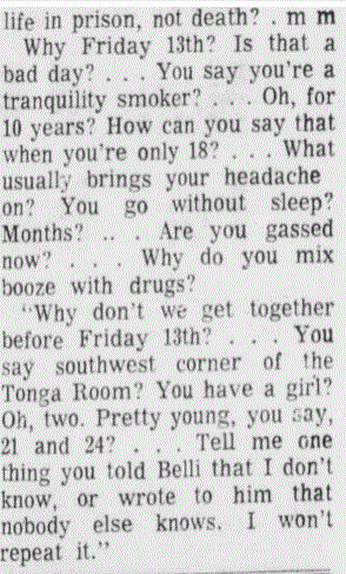
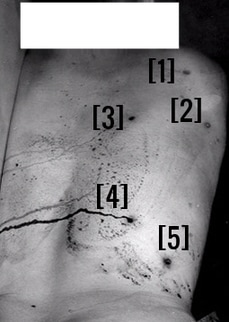
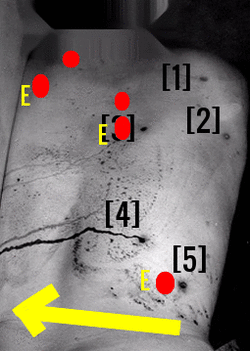
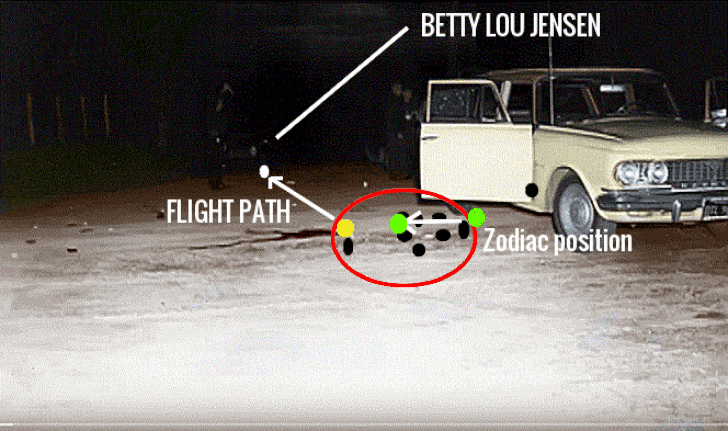
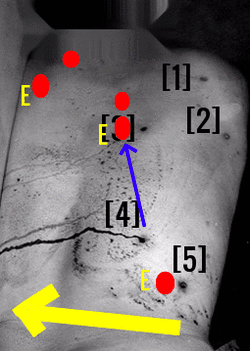
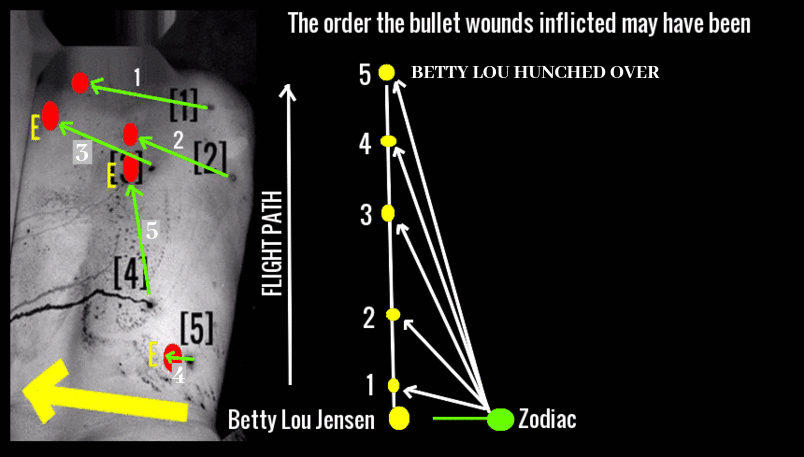





 RSS Feed
RSS Feed
